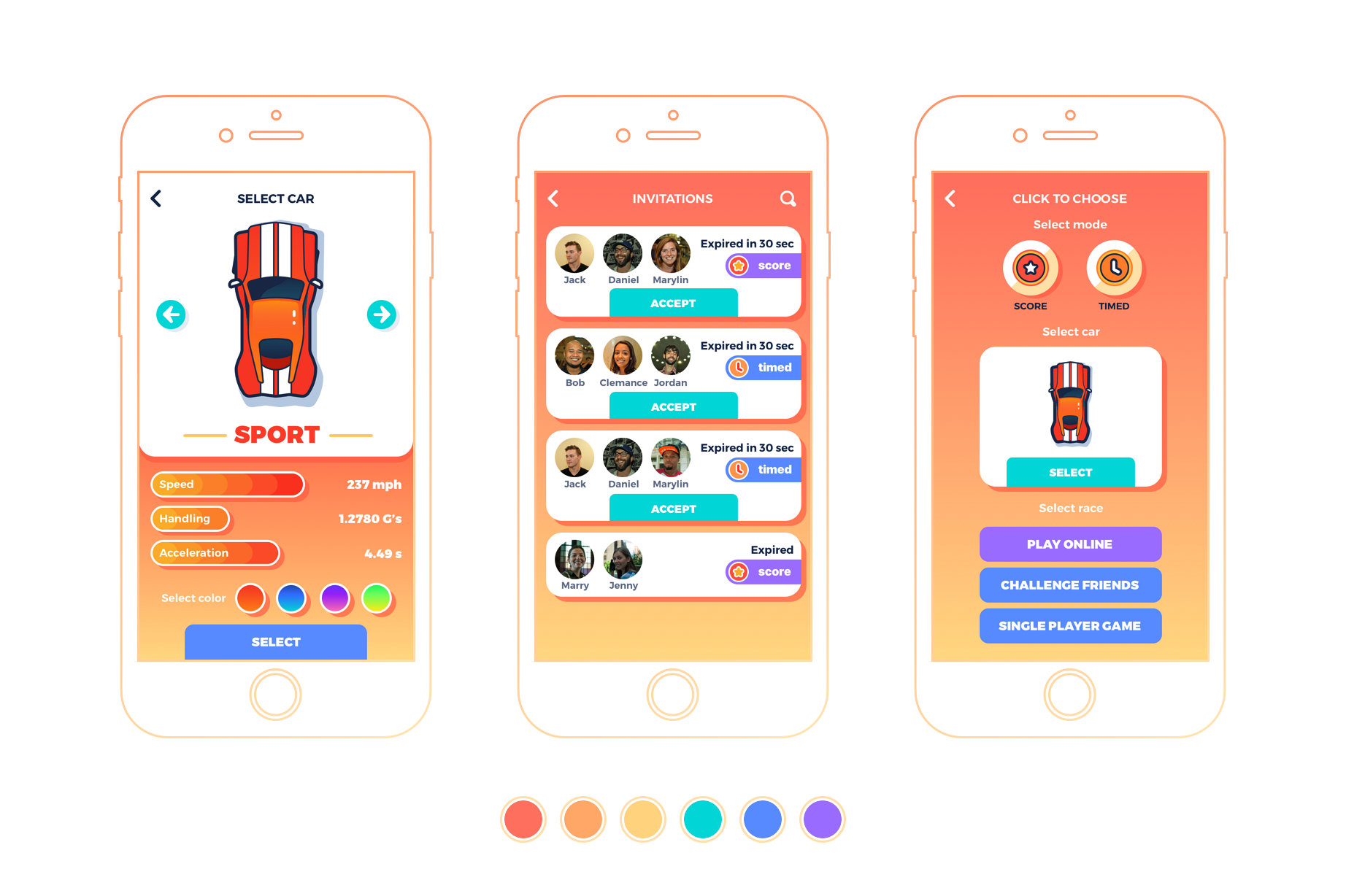Introduction to Visual Identity
Visual identity is a fundamental aspect of branding, serving as the visual representation of a company or organization. It encompasses various elements that together create a cohesive image, making it instantly recognizable to the audience. These elements include icons, color palettes, typography, and overall design style, all of which play a critical role in conveying the brand’s message and values.
In essence, visual identity is more than aesthetics; it defines how a brand communicates with its consumers. Icons, for instance, serve as visual cues that encapsulate the brand’s purpose or offerings in a simple and effective manner. A thoughtfully designed icon can evoke emotions and establish a connection with the target audience, allowing for a memorable interaction.
Color palettes are another crucial component of visual identity. Different colors evoke different feelings and associations, which can significantly impact consumer perception. For example, a brand using vibrant colors might convey a sense of energy and vitality, while a more subdued palette can suggest sophistication or reliability. Therefore, selecting the right colors is essential for aligning the brand with its intended message.
Typography, too, carries weight in shaping a brand’s identity. The choice of fonts communicates personality and tone, whether it’s modern and sleek or traditional and formal. The consistent use of selected typography across all branding materials ensures that the brand remains visually cohesive, which is vital in establishing trust and recognition.
Overall design style harmonizes these elements, guiding the visual language of the brand. It establishes the framework within which all the components operate, ensuring that they work together to reinforce the brand’s unique identity. A well-established visual identity not only enhances brand recognition but also fosters customer loyalty, making it an indispensable element of successful branding.
Understanding Icons and Their Significance
Icons serve as fundamental elements in the realm of visual identity, acting as symbolic representations that convey meaning, enhance comprehension, and facilitate interaction. Their effectiveness in communication is grounded in specific principles such as simplicity, recognizability, and relevance. To effectively design an icon, it is essential that each visual element is carefully considered, ensuring that users can quickly understand its intended purpose.
Simplicity is paramount in icon design. A well-designed icon should encapsulate the message or function without unnecessary embellishments. This clarity allows viewers to immediately grasp its meaning, making it easier to navigate digital interfaces or interpret brand messages. For instance, the iconic representation of a trash can for delete functions is universally understood, reinforcing the significance of straightforward visuals in enhancing usability.
Recognizability is another crucial principle. Icons must be easily identifiable and relatable to the target audience. For example, the use of universally accepted symbols such as the magnifying glass for search functions enhances user experience across various platforms. When icons are designed to resonate with users, they foster positive interactions and solidify brand connections, paving the way for increased brand loyalty and recognition.
The relevance of icons to the brand or function they represent cannot be overlooked. An effective icon should align with the overall design language of the brand while reflecting its values and mission. Take, for instance, the Nike swoosh, which not only serves as the brand’s logo but also symbolizes motion and agility, traits associated with athleticism. Such well-executed designs exemplify how icons contribute significantly to user perception and brand recognition, fostering a strong visual identity.
Crafting a Color Palette
Color plays a pivotal role in creating a visual identity that resonates with audiences and communicates a brand’s ethos. The choice of colors influences perceptions and evokes emotions, providing a channel through which brands can connect with their target audience. Each color carries its own psychological significance; for instance, blue evokes trust and serenity, while red often signifies passion and excitement. Understanding these associations is crucial when crafting a color palette that aligns with the brand’s objectives and message.
When selecting a color palette, businesses should begin by considering the emotions they wish to evoke in their audience. A strategic approach involves researching color psychology to identify colors that align with the brand’s mission and values. For example, a brand aiming for a youthful and energetic feel might incorporate bright, vibrant colors, whereas a luxury brand might opt for deeper, more subdued tones. Furthermore, it is essential to evaluate how these colors relate to the brand’s competitors and the industry at large to ensure differentiation.
Consistency is another key aspect of a well-crafted color palette. Once a selection is made, it should be applied uniformly across various brand assets, including logos, websites, marketing materials, and product packaging. This consistency not only aids in brand recognition but also helps in reinforcing the brand’s identity in the minds of consumers. To assist in maintaining this uniformity, brands can develop detailed style guides that outline color codes, usage examples, and approval processes.
In conclusion, an effective color palette is not only visually appealing but serves as a vital tool in establishing a brand’s identity. By understanding the psychological impact of colors and maintaining consistency in their application, brands can create a powerful and lasting impression on their audience.
Typography: The Voice of Your Brand
Typography plays a critical role in shaping a brand’s visual identity, serving as a fundamental element that communicates its voice and personality. The selection of typefaces significantly impacts readability and influences how the audience perceives a brand. A well-chosen font can evoke specific emotions and associations, thereby reinforcing the intended message and branding strategy. For instance, sans-serif fonts are often perceived as modern and clean, while serif fonts can convey tradition and reliability.
When choosing typography for a brand, it is essential to consider key principles such as legibility, hierarchy, and consistency. Legibility pertains to how easily text can be read, especially at various sizes. This is vital for ensuring that your branding communicates effectively across different mediums, whether in print or digital formats. Hierarchical typography organizes information by emphasizing key elements through varying font sizes and styles. This hierarchy guides the audience’s attention and improves overall comprehension, making it easier for them to navigate through content.
Consistency across all platforms is another critical aspect in establishing a unified visual identity. Maintaining the same typography style across website, social media, and print materials reinforces brand recognition and strengthens audience trust. This consistency not only enhances the user experience but also provides a cohesive aesthetic that enhances the brand’s market position. Ensuring that your typographical choices align with your overall brand guidelines will further cement your brand’s identity in the minds of consumers.
In conclusion, typography serves as more than just a decorative element; it embodies the essence of a brand. By thoughtfully selecting and applying typographical choices, brands can effectively communicate their message, create emotional connections, and establish a strong visual identity that resonates with their target audience.
Creating a Logo: The Face of Your Brand
The logo serves as the cornerstone of a brand’s visual identity, encapsulating its core values and message in a single graphic. This symbolic representation is often the first point of interaction between a brand and its audience, making it imperative that the logo is thoughtfully designed. In the logo creation process, there are several essential best practices that should be adhered to, including scalability, versatility, and timelessness.
Scalability is a critical aspect of logo design, ensuring that the logo maintains clarity and recognizability across varying sizes. From a small business card to a large billboard, a well-designed logo should be legible and visually appealing at any scale. This requires an understanding of the elements within the logo, such as line thickness, font weight, and simplicity. Versatility is similarly vital; a logo must look effective on diverse backgrounds and in various formats, whether in color, black-and-white, or monochrome. This flexibility allows for consistent branding across multiple platforms, from print to digital.
Another fundamental principle in logo design is timelessness. A successful logo should transcend trends, remaining relevant and impactful for years to come. Designers often strive to create logos that are classic in nature, avoiding overly trendy designs that may quickly become outdated. Testing logo concepts with target audiences is also essential; gathering feedback can provide valuable insights into how the logo is perceived. Engaging with focus groups or conducting surveys can reveal whether the logo communicates the intended brand message effectively. Through iteration and refinement based on real-world feedback, the final logo can better resonate with the brand’s target demographic, ultimately enhancing its visual identity.
Developing a Comprehensive Style Guide
Creating a comprehensive style guide is essential for establishing a consistent visual identity across all brand touchpoints. A well-structured style guide serves as a reference document that consolidates various visual elements, ensuring that anyone working with the brand maintains uniformity in design and messaging. To begin, it is critical to outline essential components that should be included within the guide.
First and foremost, the section on logo usage is paramount. This part should detail different logo variations, such as color, monochrome, and horizontal/vertical layouts. It should also define the minimum safe area around the logo and stipulate any inappropriate usages that could compromise the brand’s integrity. Next, color specifications must be clearly outlined. This entails providing primary and secondary color palettes along with their corresponding hexadecimal and CMYK codes. By doing so, designers and marketers can ensure that color representation remains consistent across all platforms and materials, vital for effective brand recognition.
Typography guidelines follow closely behind, as typeface selection plays a crucial role in communicating the brand’s identity. The style guide should specify the primary and secondary fonts, along with their sizes, line spacing, and usage instances. Consistency in typography not only enhances readability but also reinforces the brand’s visual voice. Furthermore, outlining iconography rules within the style guide supports a cohesive and recognizable visual language. It is advisable to include guidelines on icon style, size, and usage alongside examples of acceptable and unacceptable icons.
By integrating these various elements into a cohesive style guide, organizations are equipped to maintain a consistent visual identity, fostering brand cohesion and ensuring that all creative outputs resonate with the intended audience. Ultimately, a well-crafted style guide becomes a pivotal resource that guides design and communication efforts across the entire brand spectrum.
Implementing Visual Identity Across Platforms
In the digital age, establishing a consistent and recognizable visual identity across various platforms is essential for brand success. Companies often utilize different mediums such as websites, social media, print materials, and product packaging to communicate their brand message. It is imperative that the visual identity remains coherent across these platforms, as this consistency fosters brand recognition and trust among consumers.
One effective strategy involves creating a comprehensive visual identity guide, which outlines the color palette, typography, imagery style, and logo usage. This guide serves as a reference for designers and marketers, ensuring that visual elements are adapted appropriately for each platform while maintaining the core brand identity. For instance, while the format may differ between a vibrant Instagram post and a formal print brochure, the underlying themes and colors should reflect a unified brand personality.
Moreover, adapting visual elements to fit the specific context of each platform without sacrificing brand identity can be achieved through careful consideration of audience engagement. For example, animated graphics may be suitable for social media campaigns to capture attention quickly, while more understated designs may work better for professional networking sites like LinkedIn. Successful brands often showcase this adaptability. Notable examples include Coca-Cola and Nike, which seamlessly apply their iconic logos and color schemes across various platforms, ensuring immediate recognition.
Implementing a cohesive visual identity not only facilitates recognition but also enhances user experience. Pay attention to ensuring that elements like call-to-action buttons and navigation design are user-friendly across different devices and formats. By prioritizing consistency and clarity, brands can cultivate a strong presence that resonates with their target audience, ultimately building lasting relationships with consumers. This strategic approach to visual identity drives engagement and fosters brand loyalty.
Measuring the Impact of Visual Identity
In today’s competitive marketplace, measuring the impact of visual identity is crucial for businesses to understand the effectiveness of their brand representation. A well-defined visual identity not only enhances brand recognition but also fosters emotional connections with the audience. Several key metrics can be employed to assess this effectiveness. Brand recognition can be quantified through surveys and focus groups, where participants are asked to identify brands based on visual elements alone. This method provides insights into how well the visual identity resonates with consumers and how effectively it communicates the brand’s message.
Engagement is another critical metric to consider when measuring the impact of visual identity. Social media analytics tools can be employed to track engagement rates, including likes, shares, and comments on visual content. These metrics can reveal how audiences are interacting with the visual elements of a brand, indicating the level of interest and affinity towards the brand. Furthermore, website analytics can provide data on user behavior, highlighting which visual elements attract attention and encourage conversions.
Collecting user feedback is essential for optimizing visual identity. Tools such as online surveys and feedback forms can be integrated into digital platforms to gather insights directly from users. Conducting A/B testing with different visual presentations can also help determine which variations yield better engagement rates. Apart from assessing current effectiveness, it is important for brands to know when to revisit and refresh their visual identity. Market trends, audience preferences, and technological advancements make it necessary to adapt to maintain relevance. Brands should periodically evaluate their visual identity to ensure it aligns with evolving consumer expectations and market dynamics, thus solidifying their place in the industry.
Case Studies: Successful Visual Identities
In today’s highly competitive market, a strong visual identity is essential for a brand’s recognition and success. Several brands exemplify how effective visual identities can elevate a company’s standing and resonate with consumers. One notable case is Apple, whose minimalist aesthetic employs an iconic logo and a consistent color palette. The recognizable apple silhouette, combined with a monochromatic scheme, creates a powerful brand presence that conveys sophistication and innovation. Apple’s approach to typography, particularly the use of the San Francisco typeface, further reinforces its modernity and clarity, ensuring that the brand communicates its core values effectively.
Another compelling example is Coca-Cola, which has successfully cultivated its visual identity through its iconic red and white color scheme. The distinct script logo and the use of retro-inspired advertising have contributed to a timeless brand image. Coca-Cola’s strategy emphasizes emotional connections, leveraging visuals that evoke nostalgia and happiness. The consistency of their branding across various platforms, from packaging to advertisements, has built a strong visual identity that stands out in a crowded market.
Furthermore, Airbnb showcases how an effective visual identity can foster community and belonging. Their logo, known as the “Bélo,” symbolizes people and places, reflecting the core idea of connecting travelers with hosts. By integrating vibrant colors and user-friendly design elements, Airbnb creates an inviting atmosphere. The emphasis on imagery and typography throughout their website and marketing materials underscores their brand mission of belonging anywhere, making it a perfect example of visual identity enhancing brand storytelling.
These case studies demonstrate the importance of a cohesive visual identity in establishing brand recognition and fostering consumer loyalty. By analyzing the elements that contribute to successful brands, such as colors, typography, and iconography, businesses can draw valuable lessons and apply them to their own visual identity strategies, ensuring a powerful presence in the marketplace.


